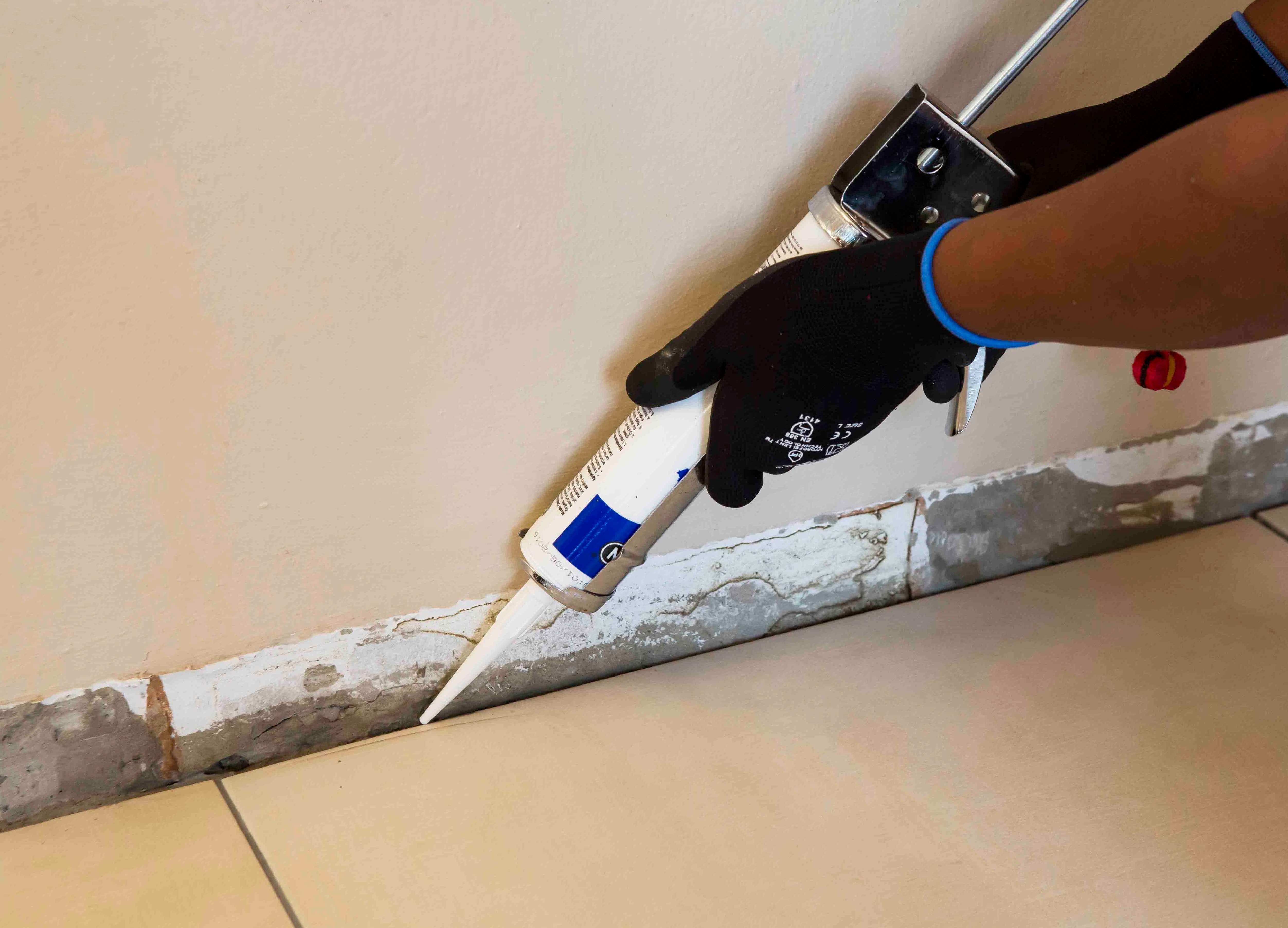Light-coloured ceramic tiles
Some white and light coloured ceramic tiles are susceptible to glaze discolouration due to moisture pull through, i.e. the grey adhesive shows through the light-coloured body of the tile in the form of ‘staining’ (contrast).
TAL PROFESSIONAL WHITE is a light-coloured general-purpose standard-setting cement based powder adhesive especially formulated for fixing white and light-coloured ceramic wall and floor tiles in interior and exterior installations.


Mosaics are assembled as sheets, either paper-faced – glued face-down onto paper or plastic, or mesh-backed – bed-side down onto a synthetic mesh backing or small tabs. Paper-faced mosaics are preferable, as they allow full contact with the adhesive.The backing mesh should be a water-resistant synthetic fabric like nylon – not cotton or paper. It should be compatible with the adhesive, and not weaken when exposed to moisture. With mesh-backed mosaics, the fabric or tabs and bonding should cover less than 25% of the back of each mosaic tile, or tessera, to enable adequate adhesive contact. Damaged tesserae should be replaced.
TAL’s quick-setting MOSAICFIX adhesive is ideal for installing mesh-backed glass mosaics onto a shower floor, as it is light in colour. Glass tiles tend to be see-through, and darker adhesives may affect the aesthetic finish of the installation adversely by making the colour of the tiles appear different. We therefore recommend using the Super White variant.
Note: Note that properly detailed and installed waterproofing is essential when tiling a shower. Look at How to Waterproof a Shower.
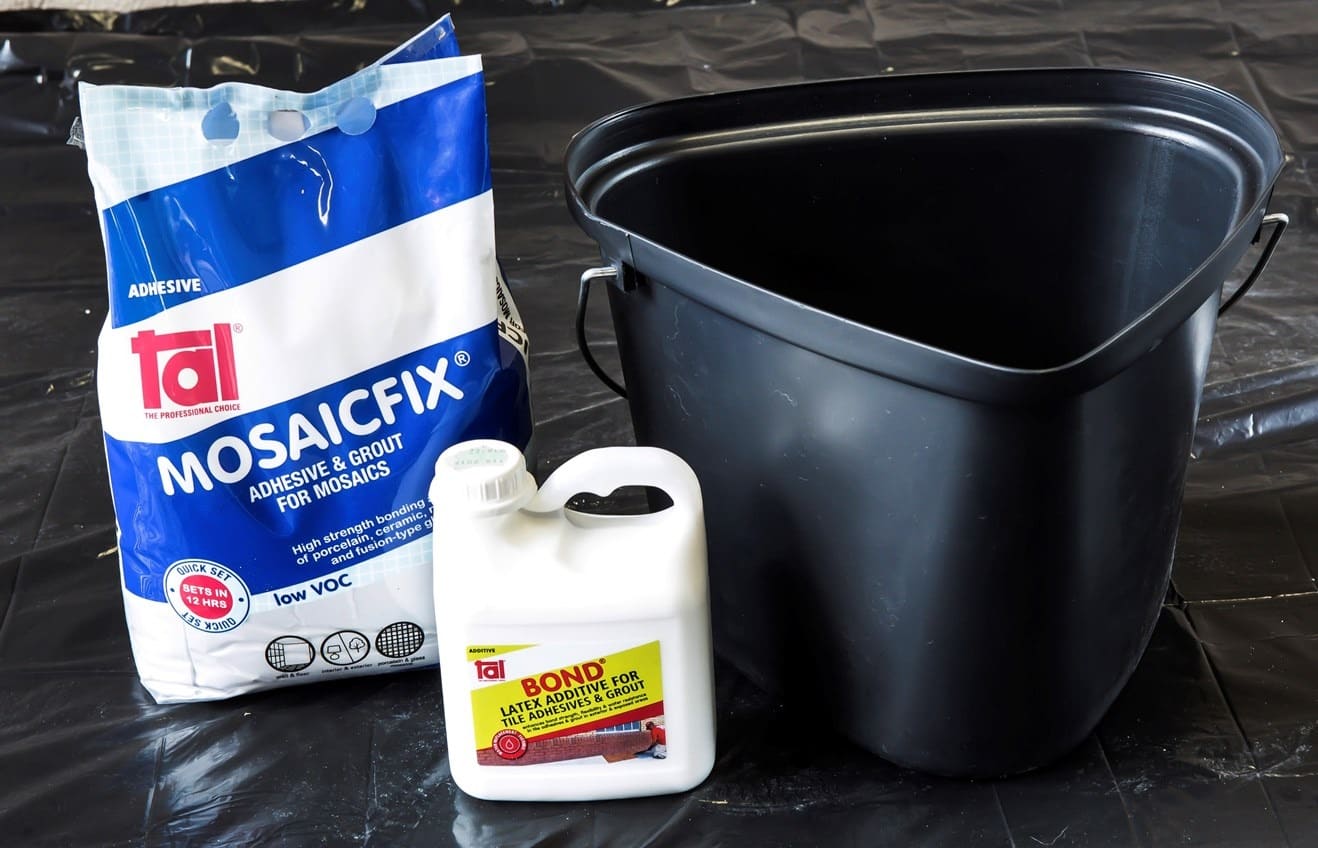

Step 1. Begin by priming the surface, ensuring it is in good condition, and clean and dry, with a moisture content of less than 5%. Brush a layer of TAL FLOOR PRIMER onto the surface, and leave to dry completely, before preparing the adhesive mix.






Step 2. In the meantime, plan the layout of the mosaic sheets and cut them to fit around the waste.
Tip: For enhanced flexibility and water resistance, it is recommended that the adhesive water mix be replaced with TAL BOND. This is important in installation areas that will be exposed to water, heat and humidity. Add TAL MOSAICFIX to the liquid and mix well to a creamy, lump-free consistency. Let it stand for three minutes and stir again.


Step 3. Once mixed well, apply the adhesive to the surface in a solid bed of 4 mm to 6 mm, working in small areas of a square metre at a time.


Step 4. Bed the mosaics immediately, pressing them firmly into the adhesive. Use a wooden beating block or rubber grouting float to tap them in and create a level surface. Using tile spacers between the individual mosaic sheets will maintain the joints.
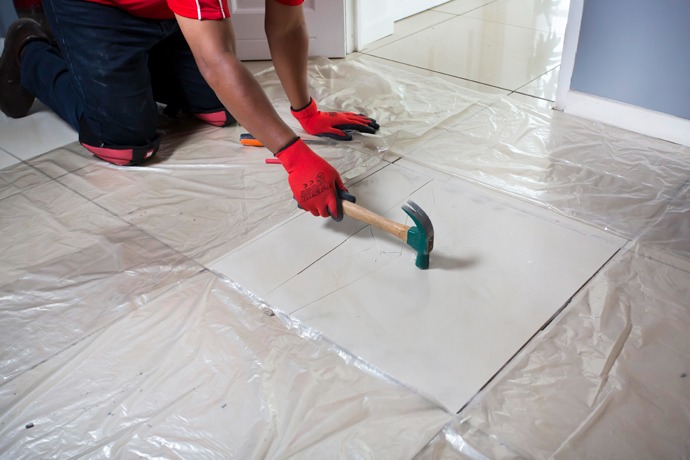



Where necessary, use a grout squeegee to apply additional adhesive to fill in any voids in the grout joints.


Step 5. Allow the adhesive to squeeze through the joints between the mosaics to form the grout and, if necessary, fill in any low areas in the joints with extra adhesive.


Step 6. Clean the excess adhesive off the face of the mosaics gently with a lightly dampened sponge, and leave to dry for a few hours.Work carefully to ensure that the mosaic installation is not disturbed, and that the glass mosaics are not scratched during application and cleaning. Polish the mosaic tiles with a dry cloth to remove any grout haze.


Step 7. Apply a silicone sealant to all the perimeter joints.


TAL MOSAICFIX is available in 20 kg and 5 kg bags from leading retail outlets.
Designed to be 100% compatible, using the TAL range of products ensures fully guaranteed multi-level tiling systems from a single source. TAL products are manufactured in South Africa to suit local climatic conditions.
If you are in any doubt, contact the TAL Technical Advisory Service on 0860 000 TAL (825), email [email protected]. Alternatively, employ the services of an experienced and skilled mosaic tiling contractor.




When replacing tiles, it is not always possible to apply the TALFIX directly to the floor, in which case apply the adhesive in a solid bed onto the back of the tile, ensuring complete coverage. Gently trace the notched side of a floor trowel through the adhesive to create ‘ridges’.


Adhesive system
When tiling onto existing tiles, it is important to only use a quick- or rapid-setting adhesive, as the existing tiles will present a dense, impervious surface, and standard-setting adhesives will take longer to dry. Too early trafficking of newly-installed tiles before the adhesive has set sufficiently can result in hollow-sounding or loose tiles.
Use TAL Tile-To-Tile quick-setting adhesive for tiling onto interior surface beds. When tiling onto suspended slabs and for external installations mix the TAL Tile-To-Tile with TAL Bond, replacing the water in the mix. Alternatively, TAL Bond Powder can be added to the adhesive mixing water.
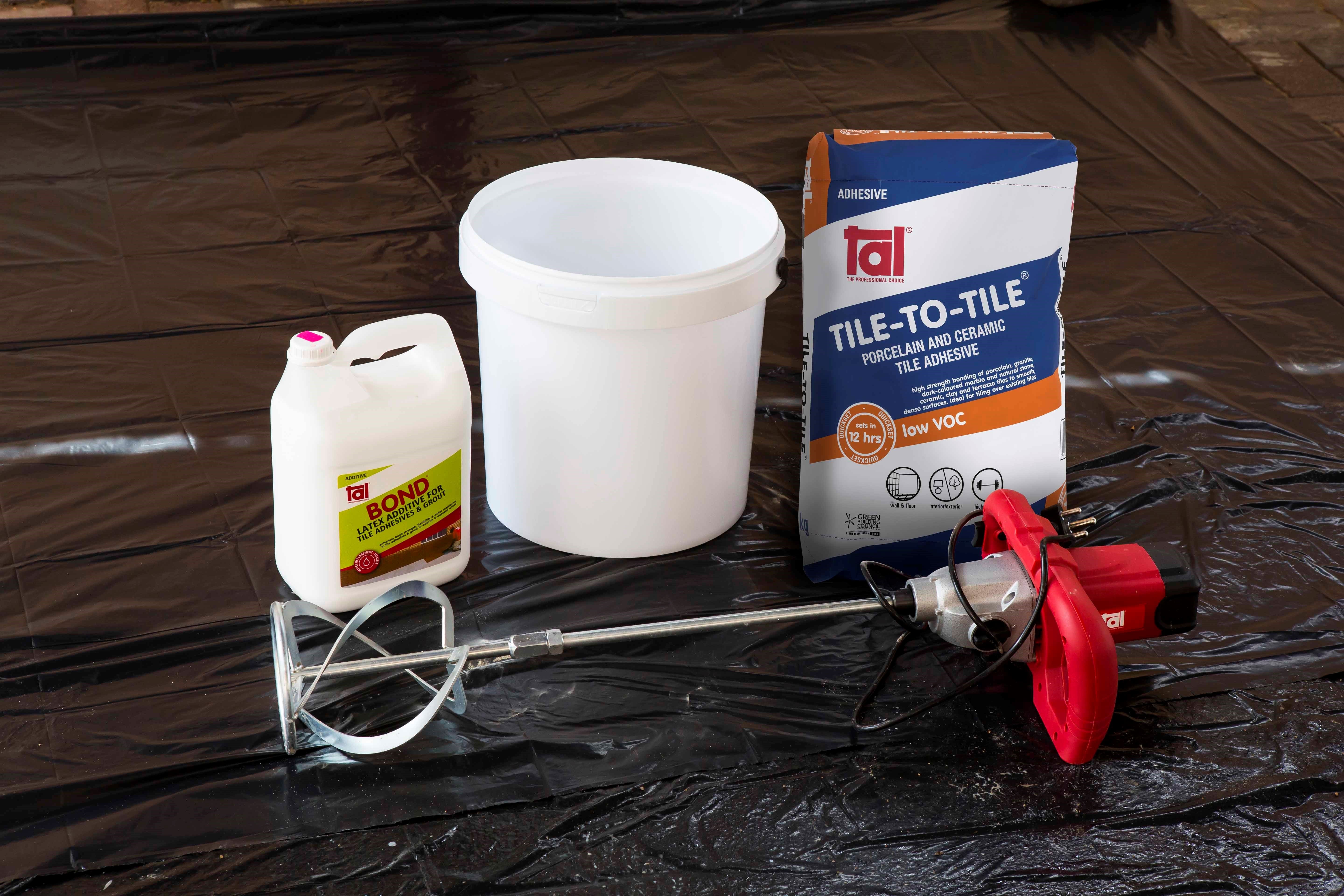

Ensure that there is a solid bed of adhesive at least 6 mm thick beneath each tile.
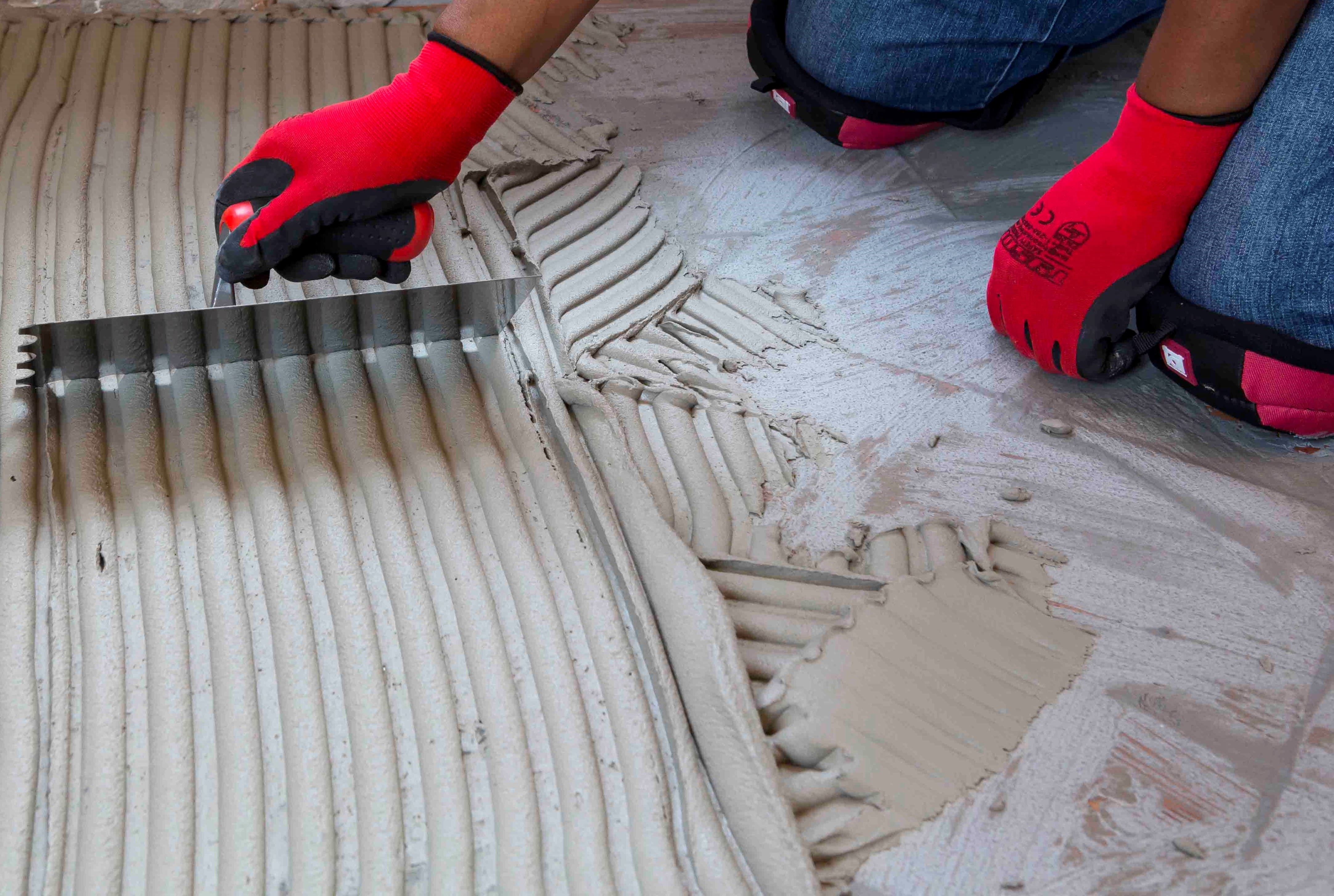

Back buttering with a thin coat of adhesive may also be required when using large-format tiles to ensure full contact with the adhesive bed.
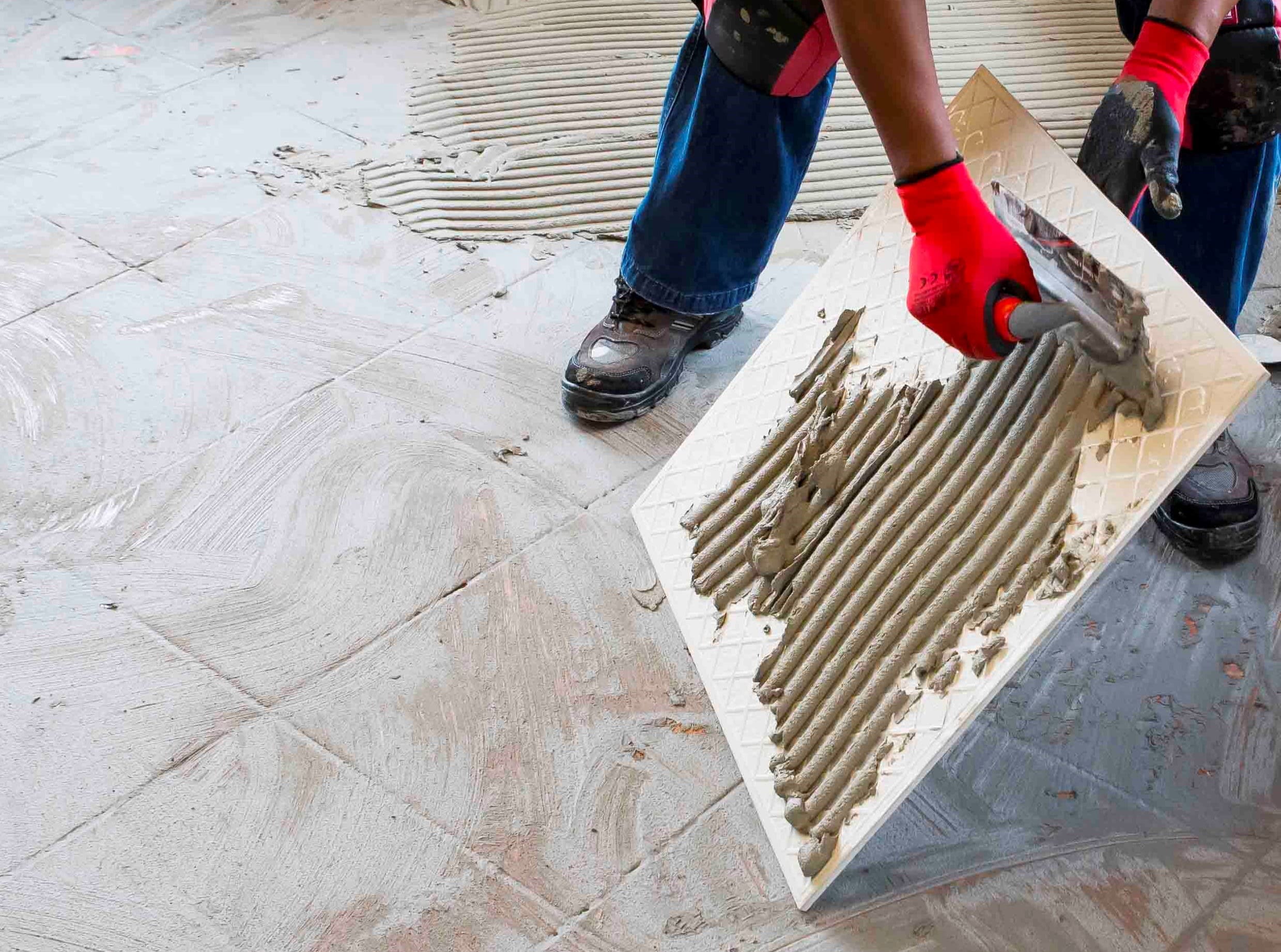

Grouting
Grouting should not be carried out until the adhesive has set sufficiently to prevent the tile installation from being disturbed during the grouting operation (always refer to the adhesive packaging for setting times). When using TAL TAL Tile-To-Tile, allow a minimum of six hours before grouting.
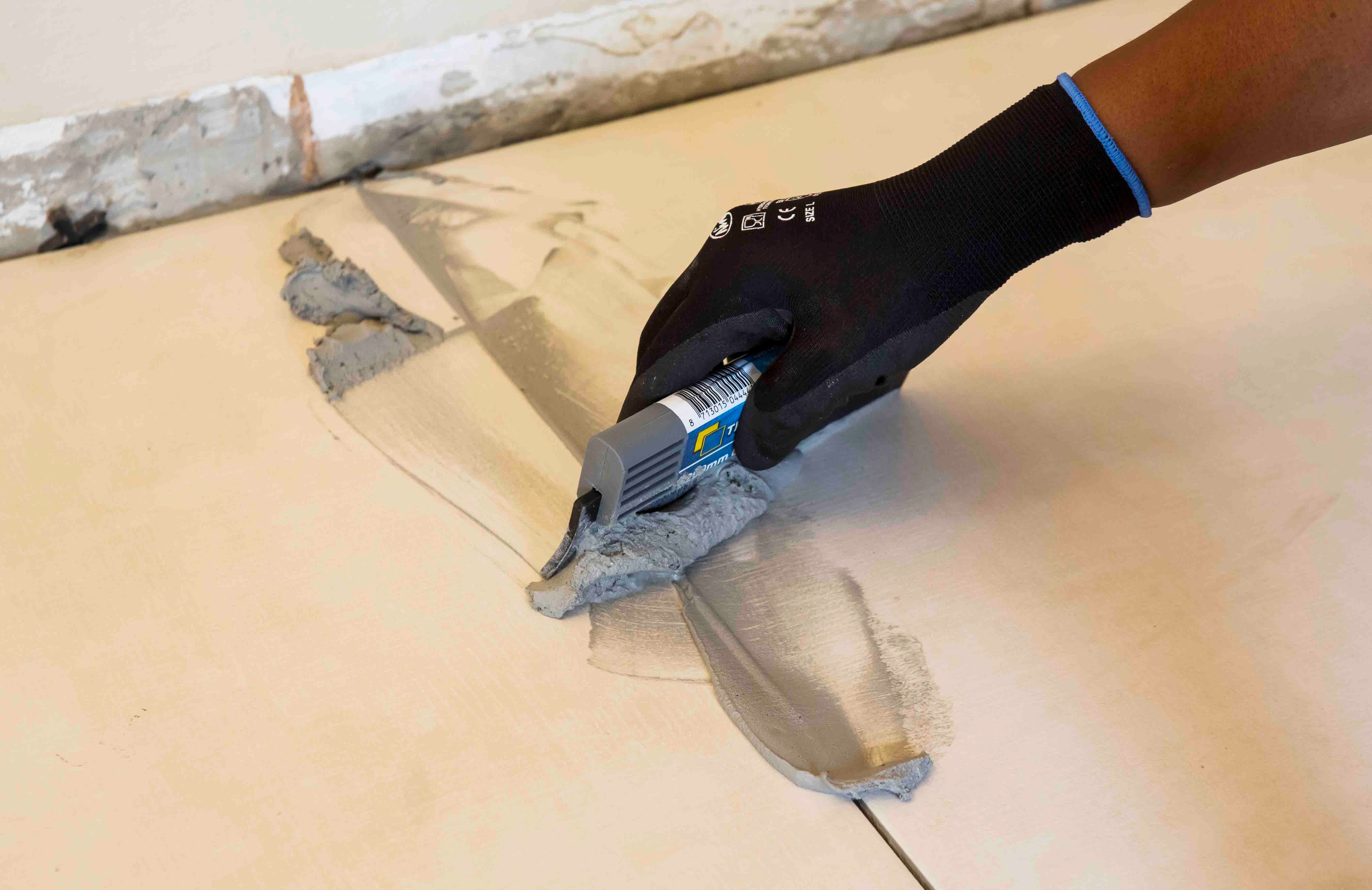

For interior surface beds, use TAL Wall & Floor Grout for filling tile joints up to 8 mm wide. TAL Quarry Grout can be used in wider joints up to 25 mm wide. On suspended slabs and for external installations, replace the water in the grout mix with TAL Bond, or add TAL Bond Powder to the grout mixing water.
Particular care must be taken to clean the grout off the tile face before it hardens completely. This is especially important when an additive such as TAL Bond or TAL Bond Powder has been used. A tile sample should be tested beforehand to ensure that no grout is absorbed through the glaze or into the tile body, thereby staining the tiles permanently.
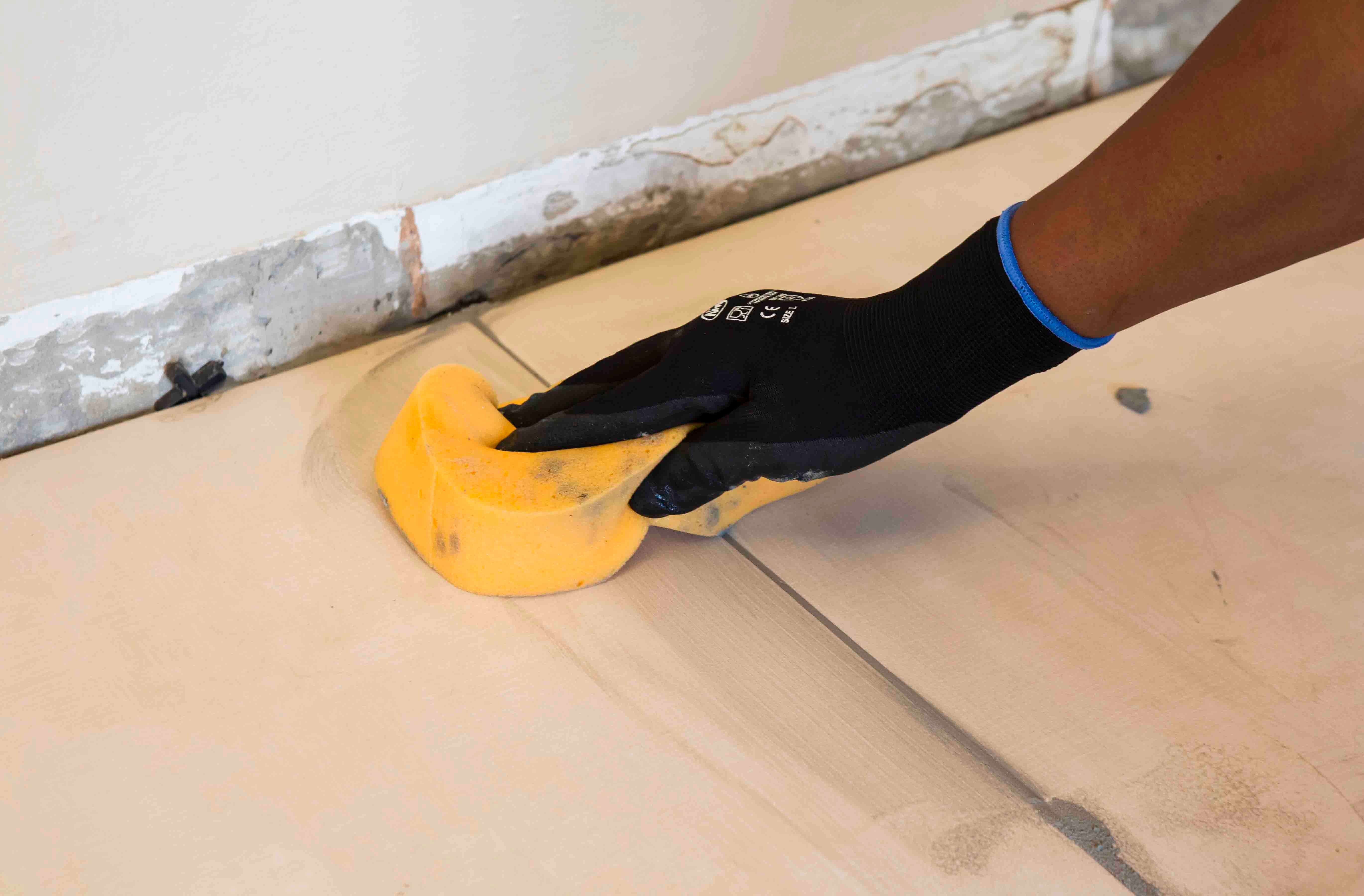

Movement joints
The lack of movement joints in tile installations is a major cause of tile failure. When tiling over existing tiles, the existing structural and movement joints must be maintained in the new tile installation. The movement joints should be at least 5 mm wide and extend through the adhesive and both tile layers.
